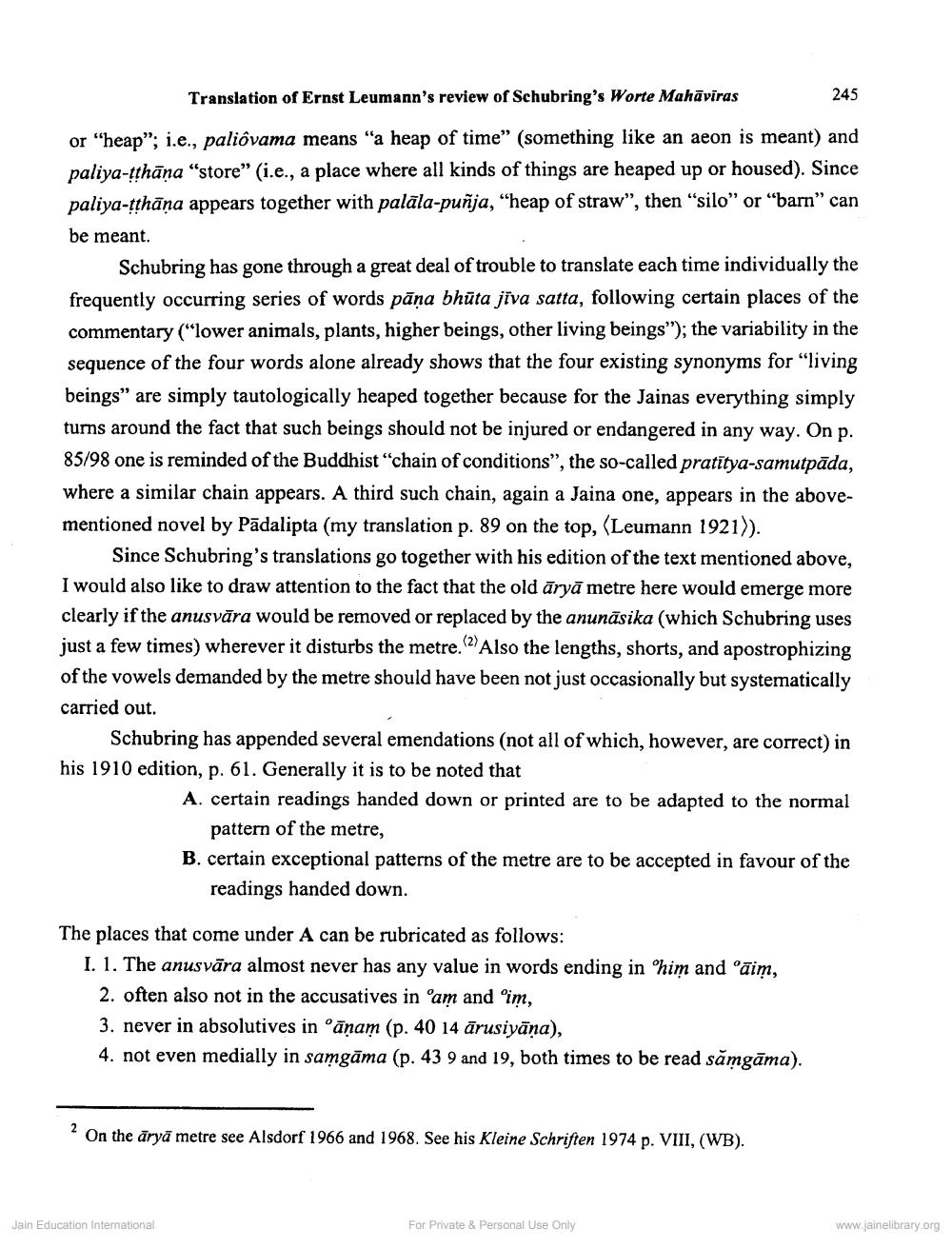________________
Translation of Ernst Leumann's review of Schubring's Worte Mahāviras
245
or "heap"; i.e., palióvama means "a heap of time" (something like an aeon is meant) and paliya-tthāna “store” (i.e., a place where all kinds of things are heaped up or housed). Since paliya-tthāna appears together with palāla-punja, "heap of straw", then "silo" or "barn" can be meant.
Schubring has gone through a great deal of trouble to translate each time individually the frequently occurring series of words pāņa bhūta jiva satta, following certain places of the commentary ("lower animals, plants, higher beings, other living beings”); the variability in the sequence of the four words alone already shows that the four existing synonyms for "living beings” are simply tautologically heaped together because for the Jainas everything simply turns around the fact that such beings should not be injured or endangered in any way. On p. 85/98 one is reminded of the Buddhist "chain of conditions”, the so-called pratītya-samutpāda, where a similar chain appears. A third such chain, again a Jaina one, appears in the abovementioned novel by Padalipta (my translation p. 89 on the top, (Leumann 1921)).
Since Schubring's translations go together with his edition of the text mentioned above, I would also like to draw attention to the fact that the old āryā metre here would emerge more clearly if the anusvāra would be removed or replaced by the anunäsika (which Schubring uses just a few times) wherever it disturbs the metre. Also the lengths, shorts, and apostrophizing of the vowels demanded by the metre should have been not just occasionally but systematically carried out.
Schubring has appended several emendations (not all of which, however, are correct) in his 1910 edition, p. 61. Generally it is to be noted that
A. certain readings handed down or printed are to be adapted to the normal
pattern of the metre, B. certain exceptional patterns of the metre are to be accepted in favour of the
readings handed down.
The places that come under A can be rubricated as follows: I. 1. The anusvāra almost never has any value in words ending in him and 'āim, 2. often also not in the accusatives in 'am and 'im, 3. never in absolutives in °ānam (p. 40 14 ārusiyāna), 4. not even medially in samgāma (p. 43 9 and 19, both times to be read sāmgāma).
- On the äryä metre see Alsdorf 1966 and 1968. See his Kleine Schriften 1974 p. VIII, (WB).
Jain Education International
For Private & Personal Use Only
www.jainelibrary.org




